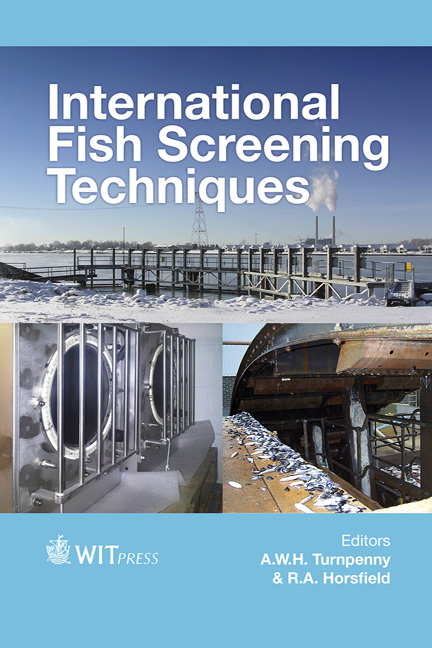Even Finer Bar Spacing, How Low Can You Go?
Price
Free (open access)
Volume
71
Pages
10
Published
2014
Size
526 kb
Paper DOI
10.2495/978-1-84564-849-7/05
Copyright
WIT Press
Author(s)
S. C. Clough, N. Teague & H. Webb
Abstract
The move towards ever finer mesh aperture/bar spacing for screens is being driven by increasingly stringent legislation and policy decisions, but to what extent can these requirements be practically achieved and at what cost? The proportion of open area on physical screens decreases exponentially relative to mesh aperture/bar spacing. The installation of screens with narrower bar spacing results in a greater demand for materials (e.g. steel) and thus more engineering and infrastructure being required, such as piling and concrete to support heavier structures. A reduction in mesh aperture/bar spacing also increases blinding risk, with implications for cleaning systems and pumping requirements. Such elevation in the consumption in energy and materials places further financial, and carbon, burdens upon industries which are already significant energy consumers and are facing increasingly high running costs. Ultimately, these costs will be passed onto the consumer. For some intakes the increased head loss associated with ultra-fine mesh aperture/bar spacing has been shown to make retrofitting of such screens impractical, resulting in the potential requirement to re-site or re-construct intakes and/or pumping stations at significant cost. It is likely that requirements for finer mesh aperture/bar spacing will be biased towards the lower reaches of catchments and this is likely to be further compounded by the proposed screening for glass eel within tidal waters. These pressures could encourage abstractors to locate new or re-built intakes further upstream where screening costs and operational risks are lower. Conversely, it could be argued that environmental impacts, excluding entrainment, could be greater higher up the catchment not least because the depleted reach effects would occur throughout a longer and arguably more sensitive river stretch. With many major conurbations centred on lower rivers, abstracting from further up the catchment would also require transporting water over greater distances to reach consumers, increasing transmission cost and potentially increasing the risks associated with leakage.
Keywords





